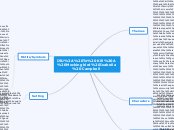arabera Isabella Campbell 6 years ago
339
ISU: TKAM
Set in the fictional town of Maycomb, Alabama during the 1930s, the narrative explores themes of racial prejudice, innocence, and moral growth through its characters and their experiences.

arabera Isabella Campbell 6 years ago
339

Honelako gehiago
iii) Jean Louise 'Scout' Finch: The narrator of the story; a young girl who is very curious and attentive. She is involved in the Tom Robinson trial due to her father's implication and is very curious about the mysterious Boo Radley. The novel is told by an adult Scout, who recalls the story, and explains her thoughts as a child. The novel takes place over, three years, and throughout this time, Scout learns a lifetimes worth of important lessons.
iv) Jem Finch: Scout's older brother who portrays the theme of "coming of age" throughout this novel. Throughout the story, Jem gains maturity and begins to show how his fathers lessons have made him a good person.
v) Tom Robinson: The man who is tried for raping a woman, Mayella Ewell. Tom Robinson is innocent, but due to the prejudice behaviour of the white community of Maywell, is believed by many to be guilty of this crime. Tom Robinson is a mockingbird figure in this novel since he causes no harm to anyone, yet he is condemned for a crime he did not commit.